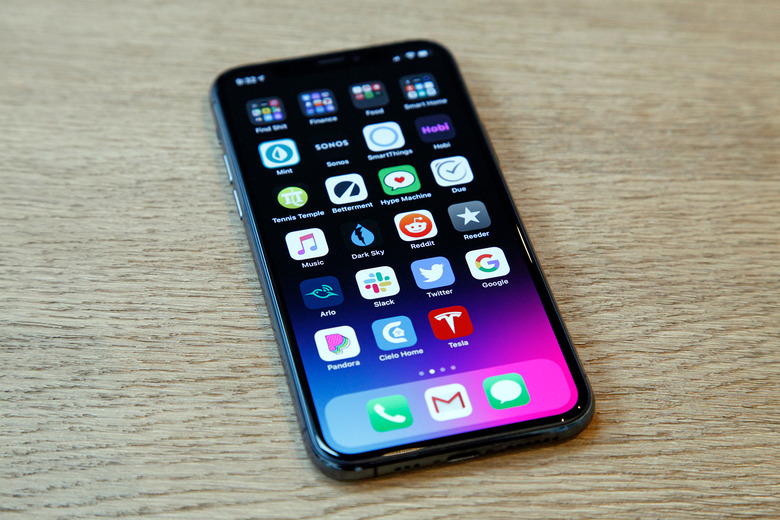Two Big Changes In iOS 13 Are Making iPhone Users Furious, But I'll Show You How To Fix Them
Apple still has one more big event next month, during which the company is expected to announce a new first-of-its-kind MacBook Pro as well as new iPad Pro models and more. While Apple fans are likely excited to see what's in store at the October event, there's no question that Apple's biggest releases of 2019 are now behind us. The iPhone 11, iPhone 11 Pro, and iPhone 11 Pro Max have been lauded by critics and users alike, and they put Apple back on top when it comes to camera quality. They're even more powerful thanks to the A13 Bionic processor, which also helps add as much as 5 hours of battery life compared to last year's iPhone models. Considering Apple's 2018 iPhone lineup already had great battery life, it's basically a cherry on top for Apple fans who decided to skip the iPhone XR and iPhone XS models and wait for this year's iPhone 11 series.
As great as the new iPhone 11, iPhone 11 Pro, and iPhone 11 Max are, however, there's something that has been holding them back from reaching their full potential. Making matters even worse is the fact that we've seen this exact same story play out before, just a few short years ago. Remember back in 2017 when Apple released the iPhone X and iPhone 8 series phones that obliterated Android rivals on paper but kept losing real-life speed tests? RAM management issues and other problems in iOS 11 were the reason those models weren't performing as well as they should have, and now we're seeing the exact same thing happen with the iPhone 11 series and iOS 13. Apple has some work to do if it hopes to iron out these accidental wrinkles anytime soon, but there are also some intentional changes in iOS 13 that have really been making iPhone users far angrier.
Apple made a ton of terrific changes in iOS 13 as it continues to add new features and streamline existing ones. Of course, Apple also had some important choices to make. The company finally came to terms with the fact that 3D Touch was adding unwanted component and manufacturing costs to its iPhones. The tech behind 3D Touch is revolutionary, and it took Apple a whopping 5 years to develop. Sadly, the feature itself is entirely unnecessary since almost everything 3D Touch can do can easily be replaced with a long-press. And so after just 4 years, Apple ditched a marquee feature that took 5 years to develop.
That brings us to the first big problem people are having with Apple's iOS 13 software. Thankfully, it's also a problem that's easy to fix.
Everyone knows that tapping and holding on an app icon for a moment will trigger what iPhone users lovingly refer to as "jiggle mode." This special mode allows you to drag icons around to rearrange them or uninstall apps by tapping the "X" on any icon. You can also create folders or move apps into folders this way. (While we're on the subject of folders, did you know you can tap a folder with one finger while holding a jiggling app with the other to open the folder?) On iPhones with 3D Touch, tapping on an app icon and pressing firmly instead opens a Quick Action menu as well as a widget if the developer created a widget for the app.
Since long-pressing on an app icon already has a function on the iPhone, how is Apple going to offer both features without 3D Touch?
The solution Apple came up with on phones like the iPhone 11 series is pretty straight-forward. When you tap and hold on an app icon, "Rearrange Apps" is now one of the options that will appear in the Quick Actions menu. Alternatively, you can also just keep holding after the Quick Actions menu opens and eventually, the icons will start jiggling.
Users don't seem to like this solution at all, and a few quick searches will find tons of complaints on Reddit, Twitter, Facebook, and elsewhere. It's certainly not the end of the world, but it is pretty annoying. Luckily, there's an easy workaround so that you can quickly and easily rearrange your apps just like you could before.
When you tap and hold on an app icon in iOS 13, you'll feel a tiny vibration just before the Quick Actions menu pops up. The key is to tap and hold on the icon, but then start dragging it as soon as you feel the haptic feedback. That will skip the Quick Action menu and allow you to begin rearranging your apps right away.
In the video below, you'll see how it works. First I long-pressed until the Quick Actions menu popped open so you can see what that looks like. After that, I long-pressed until I felt the haptic feedback, then I began dragging the icon around.
It might take you one or two tries to get the timing right, but it's very simple once you get the hang of it.
The other big problem that people are having in iOS 13 pertains to moving the cursor around in text that you've typed. In earlier versions of iOS, tapping within the text would pop up a magnifier above your finger so that you could see the precise location of the cursor. That magnifier has been completely eliminated in iOS 13, and iPhone users are not happy at all.
Don't worry, there's also an easy fix for this issue. Just tap and hold on the space bar for a moment, and the iOS keyboard will turn into a big trackpad. Then you can slide your finger around and the cursor will follow your movement. The video below shows you how it works.
